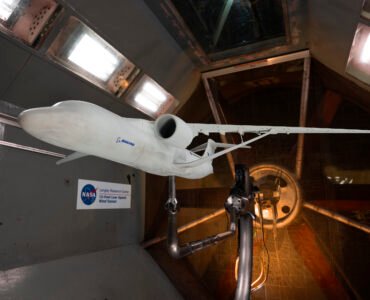The study of air quality in Asia has taken a giant leap forward with the collaboration of NASA and the National Institute of Environmental Research in Korea. The Airborne and Satellite Investigation of Asian Air Quality (ASIA-AQ) mission is an unprecedented effort to gather comprehensive data from various sources to better understand the air we breathe. This joint effort is a major step towards improving air quality worldwide and offers valuable insights for IT professionals seeking to emulate success in their respective field.
This international collaboration, spearheaded by NASA, is a momentous endeavor to examine the intricate factors that control air quality in Asia and beyond. By leveraging cutting-edge aircraft, satellites, and ground-based instruments, the ASIA-AQ mission aims to collect detailed atmospheric data over multiple locations in Asia. These comprehensive data will be shared with air quality and government agencies to further air quality research and understanding worldwide.
This monumental initiative, led by NASA, has far-reaching implications for IT professionals looking to learn from and emulate success in their respective field. The use of innovative technologies, data collection methods, and collaboration with international partners provides valuable insights for IT leaders seeking to implement similar strategies in their organizations. The ASIA-AQ mission showcases the advanced capabilities of leveraging diverse data sources, advanced analytics, and collaboration across international boundaries to achieve groundbreaking results.
International Partnership
One of the most important aspects of this study is the unprecedented collaboration among international partners. The ASIA-AQ mission brings together the expertise of NASA and Korea’s National Institute of Environmental Research to work towards a common goal of enhancing air quality research and understanding. This highly successful collaborative effort offers key lessons for IT professionals seeking to foster collaboration and exchange of knowledge among diverse teams to achieve ambitious objectives.
Furthermore, the ASIA-AQ mission facilitates the integration of data from multiple sources, including aircraft, satellites, and ground-based instruments. This comprehensive approach to data collection enables a deeper understanding of air quality and its related factors. IT professionals can draw insights from this approach to effectively integrate diverse data sources and develop advanced analytics capabilities to derive valuable insights for their organizations.
The ASIA-AQ mission also highlights the importance of sharing data and research findings with relevant stakeholders. By collaborating with air quality and government agencies, the mission ensures that the collected data is used to enhance air quality research and understanding worldwide. IT professionals can learn from this approach and prioritize sharing data and insights with relevant stakeholders to drive meaningful impact in their organizations and beyond.

IT leadership Insight from Air Quality Study
The ASIA-AQ mission presents a paradigm for IT professionals to drive impactful outcomes by leveraging advanced technologies, fostering collaboration, integrating diverse data sources, and prioritizing data sharing. By emulating the success of this international collaboration, IT leaders can harness the power of innovative strategies to achieve ambitious objectives and drive meaningful impact in their organizations.
The collaboration between NASA and the National Institute of Environmental Research in Korea for the ASIA-AQ mission represents a significant milestone in the study of air quality. This groundbreaking effort offers valuable insights for IT professionals seeking to learn from and emulate success in their respective field. By leveraging cutting-edge technologies, fostering international collaboration, integrating diverse data sources, and prioritizing data sharing, IT professionals can draw valuable lessons from the ASIA-AQ mission to drive impactful outcomes in their organizations.
NASA missions are the embodiment of human progress and achievement. They showcase the heights of engineering, computer science, and innovation.
Despite all constraints, challenges, and difficulties, NASA represents humanity’s ability to rise above our differences and solve our greatest challenges. It’s a symbol of our collective potential.
It’s a fallacy that NASA is over-funded or wasteful in its spending. Their work is critical to advancing our understanding of the universe and improving life on Earth.
NASA’s current budget is around $19 billion, which may sound like a lot, but when adjusted for inflation, it’s just a fraction of what it was in the mid-1960s.
Do you like the Air Quality Study article?
I like to write about Science and Technology and other science and technology developments on my site for my own easy reference and to share with everyone who is interested.
If you like this story you should check out some of the other stories in the Science Section
To check the original story Click here







